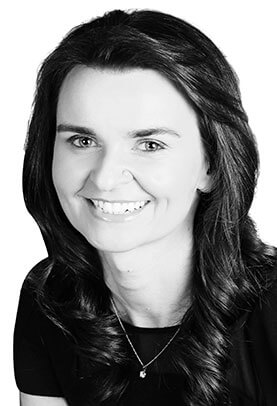
Dr Claudine Kearney (Senior Lecturer and Programme Director) RCSI Graduate School of Healthcare Management.
There have been many unprecedented challenges within healthcare over the last number of years adding to an already overly stretched global healthcare system. This necessitates the need for leadership in healthcare organizations to be more flexible and provide staff with an environment where they are encouraged and empowered to utilize their creativity, and explore and exploit ideas that generate innovations across the full healthcare system. While healthcare is a vast area of diverse specialisms these specialisms need to work closer together, to better utilise the diverse expertise and core competencies of each specialist team that can significantly drive innovation beyond what is currently imaginable. No specialist team should or can work in a silo. This is particularly important for patients’ that attend multiple specialist teams either, as part of the same diagnosis or for co-morbidities. Therefore, leadership should drive innovation by engendering a healthcare system of trust (among all levels of staff and patients), and ensure consistency and effectiveness in communication within and across each area of specialism. All healthcare professionals need to work together as an effective team, clearly communicating accurate, relevant and timely information and synergizing on the diverse competencies to make the best decisions for the delivery of patient care and follow-up. This requires the ability to clearly explain (avoiding medical jargon and terminology when communicating with patients), actively listen to patients’ concerns and have the confidence as a medical professional to say ‘I do not know’ to any patient that asks a question that you do not know the answer to. Equally, ‘one size does not fit all’ patients and medical professionals should not refer to outdated research that is not accurate or relevant today and does not represent the condition of the patient. Miscommunication, inconsistency in communication and inaccurate communication leads to confusion, frustration and distress beyond the condition or diagnosis. This is unnecessary and can be avoided by having the right leadership that ensures accurate, relevant, timely, consistent and effective communication within and across the specific specialism(s) in which the patient is attending.
Leadership is paramount to develop and advance innovation across healthcare systems. Healthcare leaders must exert themselves so that they are continuously striving to engender innovations within and across their specialism in order to generate greater patient value and outcomes. The positive influence of innovation across the healthcare system requires:
- Leadership and management support at all levels and across all specialisms with a commitment to change what is currently not working and a clear vision for innovation.
- Internal and external collaborations with patients, healthcare professionals, academics, payers, policymakers and other stakeholders involved in the development and implementation of the innovation.
- Dedicated resources including staff, infrastructure, time and funding to bring the innovation to fruition.
- Open transparent communication within and across areas of specialism and throughout the broader healthcare system.
- Continuous monitoring and evaluation of progress and viability.
- Demonstration of the benefits of the innovation with particular focus on an assessment of health benefits and patient value.
- Accurate, relevant, timely and consistent communication with patients’ who should be front and centre of all innovations in healthcare.
There have been significant and invaluable innovations in the field of healthcare. The future of healthcare can bring about major innovations beyond what exists today that can provide solutions that change how we can prevent, more effectively diagnose and cure and manage diseases and conditions using new innovations. Leaders that drive innovation in healthcare facilitate and encourage idea generation and creativity, support moderate risk taking, tolerate failure as part of the innovation process, promotes learning, challenges assumptions with the goal of creating greater patient value and care, and embraces innovation across healthcare systems. They are willing to continuously learn and adapt in the dynamic and challenging environment of healthcare. Leaders are the driving force for innovation and consistent and effective communication within healthcare. This in turn positively influences the level of satisfaction, motivation, commitment and teamwork among staff which reduces the risk of miscommunication and conflicting information across the diverse specialist teams providing a more positive patient experience when patients are at their most vulnerable.
REFERENCES
Note: Further development can be found in the following book:
Kearney, C. (2022) Leading Innovation and entrepreneurship in Healthcare: A Global Perspective, Edward Elgar Publishing.

